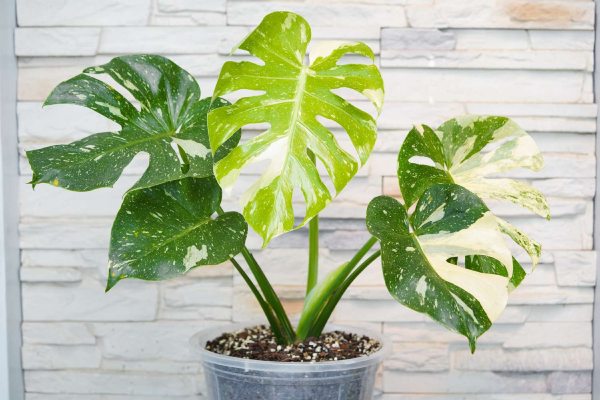What is the Thai constellation Monstera?
The Thai constellation monster is a unique and highly sought type of monster deliciosa that is popular for its variegated leaves. This monstera got its name after the marbled and speckled patterns of its delicious white and green variegation that somehow resembles a constellation. Just like the common monstera deliciosa, the leaves of the Thai constellation grow large fenestrations as they mature, ultimately giving any space a tropical flair.
Just a few years ago, getting a single leaf cut of a Thai constellation monstera would cost you a few hundred dollars. Thankfully, with the increased mass production in these years, these beautiful monsters are becoming more available and more popular. Despite being a rare plant, this plant is surprisingly low-maintenance and easy to grow at home, even for beginners. However, there is one thing you should consider while adding one to your collection and that is the Thai constellation is thought to be toxic to pets and even humans if consumed.
Also, Read All You Need To Know About Polka Dot Plants: Growth, Care, Tips, and More
Here is everything you need to know about this monstera.
- Common name: Thai constellation monstera
- Botanical name: Monstera deliciosa ‘Thai Constellation’
- Family: Araceae
- Plant Type: Perennial, vine
- Mature size: 16 ft tall, 4-5 ft. wide (indoors)
- Sun Light: Partial
- Soil Type: Loamy, moist but well-draining
- Soil pH: Acidic
- Bloom Time: Spring, Summer
- Flower Color: Green, White
- Hardiness Zones: 9-11, USDA
- Native Place: No native area
- Side Effects: Toxic to humans and pets
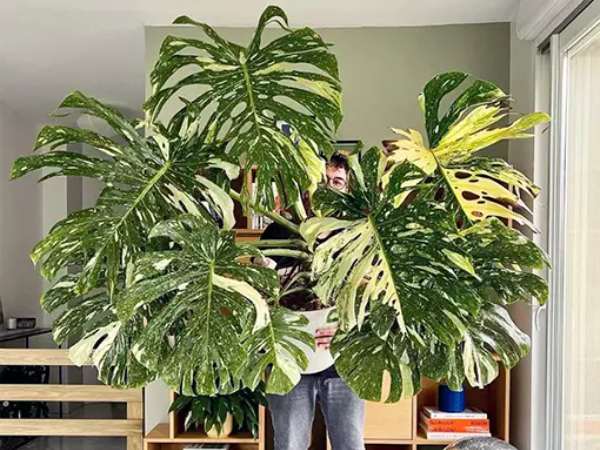
How to care for the Thai constellation monstera?
Here are some basic requirements for growing this monstera:
- This plant needs to have several hours of bright, indirect light each day. So, make sure to keep it in a room that gets enough light.
- Plant this monstera in a loose, rich, and well-draining potting medium designed for aroids.
- Be very cautious of overwatering and water only once the top three-quarters of the soil is dry.
- Do not fertilize too much. Only fertilize once a month during the spring and summer with a balanced houseplant fertilizer.
Light
Just like any other monster type, the Thai constellation also enjoys several hours of bright, indirect sunlight every day. If you’re deciding to get one for your indoors, choose a location within a couple of feet of a bright east-facing window, or use sheer curtains or window film to soften the light coming from south- or west-facing windows.
Make sure to avoid direct sunlight which will scorch and damage the plant’s beautiful variegated leaves. Also, avoid low light conditions which may cause the plant’s variegation to revert. These plants will also thrive under grow lights. Just make sure to place them in such a position that the leaves don’t burn.
Soil
Being an aroid, this plant needs a soil mix that is loose, well-draining, and rich in organic nutrients. A pre-made soil mix that has especially been designed for aroids will be a good option. You can also prepare the mix at home by combining equal parts of perlite, orchid bark or coco coir, and indoor potting soil.
Water
One of the most important parts of caring for Thai monstera is watering it properly. This plant is less drought tolerant than the common monstera deliciosa. However, it is more susceptible to root rot if you overwater it. So, it is important to find the right balance.
Between waterings, you have to let the soil dry about three-quarters and then water thoroughly, allowing excess water to drain from the pot’s drainage hole. The frequency of the watering will vary on the amount of light the plant is getting every day and also the temperature and humidity of the place. So, you can find out the time for watering based on soil moisture. You can also take the help of a soil meter if you’re unsure of whether your plant has dried out.
Temperature and Humidity
As mentioned above, temperature and humidity play an extremely big role in the growth and development of the Thai constellation. This plant thrives in warm temperatures and average to slightly humid conditions. Normally, standard household temperature and humidity levels are okay for this plant. Just be sure to keep it in temperatures between 68 to 86 degrees Fahrenheit (or 20 to 30 degrees Celsius) and avoid overly dry locations such as above an air vent or beside a drafty window.
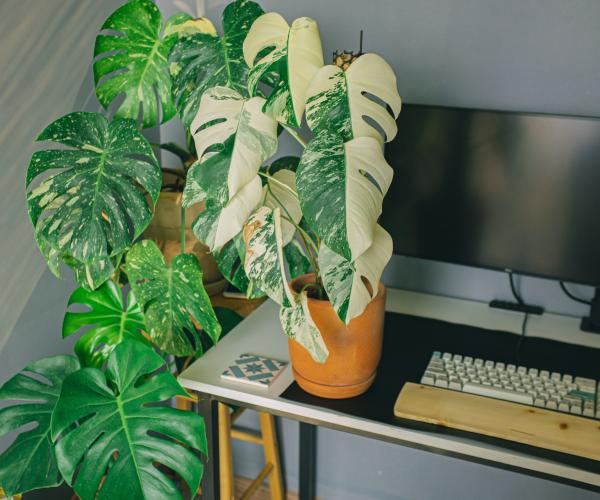
If you have a greenhouse cabinet in your house, this is the perfect plant for your cabinet. Most people say that by the time their plant has developed fenestrations, it can live outside their greenhouse cabinet without any issue.
Not to worry if you don’t have a greenhouse cabinet at home. If you feel your plant needs extra humidity, place it next to a small humidifier. You can also opt to keep it in a naturally humid room of the home such as a bathroom, laundry room, or kitchen.
Fertilizer
This plant loves fertilizer once every month during the spring and summer. Apply a balanced liquid fertilizer regularly during the watering to encourage strong and healthy growth. You must stop fertilizing entirely once the temperatures drop in the fall and winter.
How to propagate the Thai constellation Monstera
Propagating a Thai constellation is a simple task but requires some patience. Unlike the common monstera deliciosa, this plant is slow-growing and propagation will take some time. Also, you might not always get a variegated growth on your new proportions, so it can be a risky job. Despite that, if you have a large plant that requires a proper trim and you are looking to try propagation, these are the few steps you should follow:
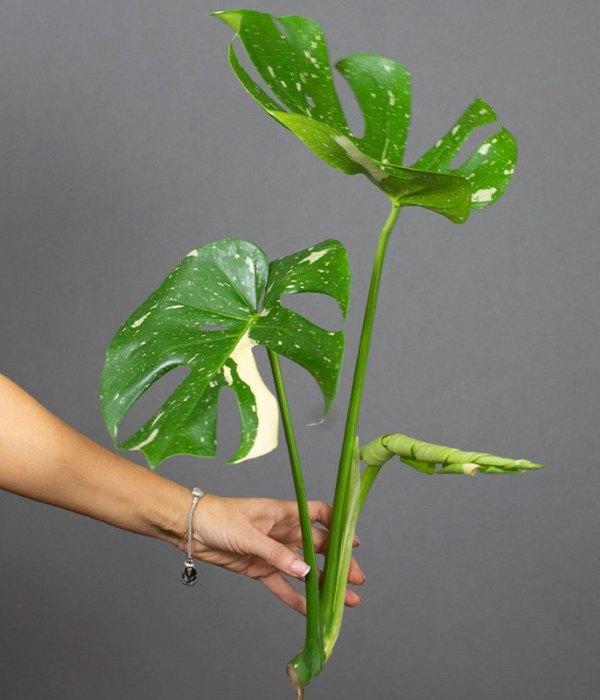
- Use a pair of sharp, clean pruning shears to take a stem-cutting from a mature Thai constellation monstera that has at least one nod and a leaf (but no more than three nodes and leaves).
- Remove the bottom leaves from the cutting if you have more than one node, leaving just one or two on top.
- Take a vase or a small glass container with fresh water and keep cutting in the water, ensuring the node is submerged and the leaf is above the surface.
- Keep the cutting in a warm location that receives bright, indirect light.
- Change the water once a week. You will realize small roots begin to grow within three to four months.
- Once the roots get an inch long, you can transfer the cutting into a loose, chunky soil mix. Once, you have potted the cutting, transfer it to its original location.
- Keep the mix properly moist for the first two weeks to help the roots accustom from water to soil.
How to pot and repot Thai constellation monstera
These wonderful plants thrive in small containers so you should not repot your plant as frequently. But if you bring a Thai constellation home and notice that it is planted in low-quality soil, or a pot too large for the plant, then you should repot your plant into a smaller container that has a more appropriate soil mix.
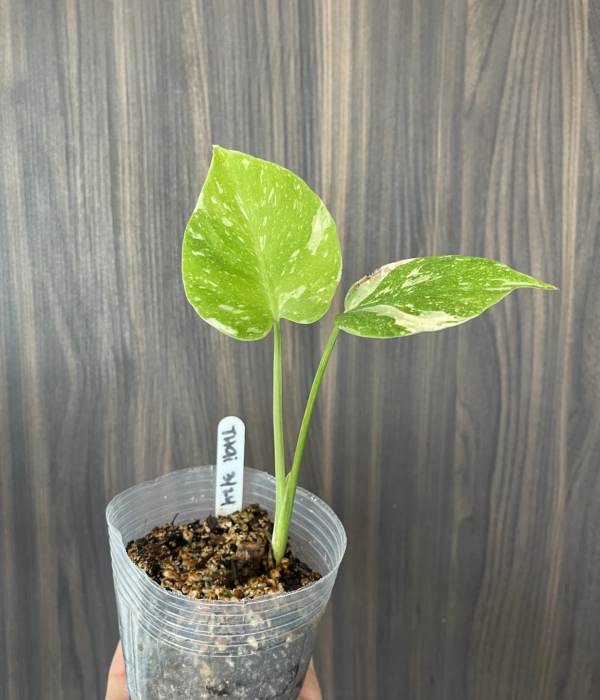
In good conditions, your plant will likely need to be repotted only once in a few years, and that too when it has outgrown its old container. Unlike the common monstera deliciosa, these monsteras are known for having a slower growth rate. That means they can survive in the same pot for a longer period. Once you see your plants’ roots taking a huge space in the pot and growing out from the pot’s drainage hole, it is safe to upsize the pot. Keep in mind to increase the pot size by two to four inches every time. For best results, repot during spring or early summer when the plant is in its active growing phase.
Common pests and plant diseases that Thai constellation gets
Every plant struggles with pests. Thai constellation’s common enemies might be mealybugs, spiders, mites, and thrips. Thankfully, this plant isn’t prone to any of them. If your monstera is infested, the pests might have migrated from another plant that you brought home that already had the insects. If that’s the case, isolate your Thai constellation immediately and start treating it with an insecticide until it is okay.
One common disease is root rot. Most of the time, the Thai constellation’s root rot results from overwatering and it can damage the plant if not detected early on. Drooping leaves and brown, mushy stems are both signs that the plant may be suffering from a root problem. If the infection is not that bad, you can try cutting away the affected roots and repotting. But if the entire root system is affected you will likely need to take stem cuttings of your plant and attempt propagation to save it.
FAQs
Q: Why is the Thai constellation monstera so expensive?
A: The Thai constellation Monstera is a rare and sought-after plant and it’s high on demand because it’s not easy to find. Since they’re not that easy to find, the demand goes up, making them a bit more expensive.
Q: How rare is the Thai constellation Monstera?
A: Thai constellations are rare due to their variegated leaves. What many don’t know is that only 10% of all Philodendron seeds will produce a Thai Constellation variety. Moreover, these plants take several years to mature. It can take nearly 5 years for the Thai constellation Monstera to reach its full size.
Q: Is Thai constellation hard to care for?
A: No, Thai constellation monsteras are fairly easy to care for, much like any other Monstera, with a few considerations. These fellas do not like being overwatered and are prone to root rot. They thrive in bright, indirect light and only need fertilizers during spring and summer.
Also, Read 10 Houseplants That Are Perfect For Your Kitchen!
